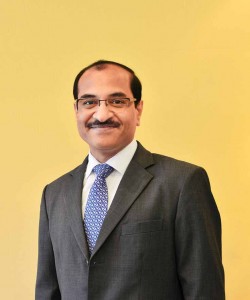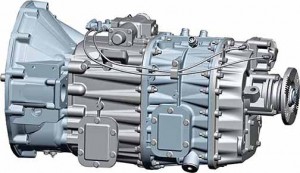Krishnakumar Srinivasan,
President – Asia Pacific, Vehicle Group, Eaton
Interview by: Bhargav TS
Q. How is the CV business shaping up. How would you describe Eaton’s growth?
A. Though China has slowed down, we were able to prove our strength across the APAC region. We out performed China last year, and we hope to continue to turn out a good performance. We do have joint venture plants in China and outside China. All put together we have nine plants across APAC. We normally partner with our customers on technological grounds. We are ready to partner right from the drawing board stage to the design, production and product delivery. The focus will be on how do we get business in India. Our presence in India has become sizable now. We supply transmissions to all OEMs. We have achieved good penetration in off highway equipment segments, haulage trucks and various other segments. Our focus is on making products and adapting them in the right way to gain substantial market share. We have grown substantially in India after the acquisition of the Kirloskar plants. We are working to deliver future technologies like valve actuation, cylinder deactivation, variable valve lift technologies, super chargers, and niche products in air-conditioning as well.
Q. How would you describe your growth in India?
A. We have had tremendous organic growth. Our hands are full. Expansion is on the cards in India and other countries. Inorganic growth has also been decent, and we are looking for synergies within our portfolios.
Q. What products are driving growth for you?
A. We are having a good play with the Dual Clutch Technology (DCT). As a technology, it has been there but its technological capabilities were displayed by us and a lot of engineering has gone into it. When you drive, you will feel the quality and smoothness; that is what we have delivered in the product. We are working on a number of technologies on AMT, and DCT is one of them. We have in our portfolio the ‘Ultraship Plus’ and this technology goes to all vehicle segments. We have a technology called Cylinder Deactivation (CDA) where a cylinder can be switched off as per the load. Fuel can be saved. Cutting off the cylinder induces vibration however. We are working on this technology by working with our customers right from the design stage. We are working on engine mounts. We have expert trainers in CAM operations, and roller rockers are electronically controlled to avoid frictional losses and wear. The piston operates, but no combustion takes place. This amounts to fuel saving.
Q. How do you quantify the savings from this technology?
A. We are not able to say the exact figures, but there is a sizeable amount of saving. The entire system is managed with mechanical and electronic programming and options. The cylinder is not removed; combustion is cut-off. If required, and in the case of high loads, the system bounces back. Combustion in the cylinder cut-off resumes.
Q. Are you in talks with any OEM for supplying this technology? How has been the response?
A. This technology cannot be implemented overnight. There are various validation cycles involved. We have experience in commercialising various valve-lift technologies. That exposure we hope to use to promote this technology. Also, we have to customise this technology as per the need.
Q. Is India a competitive Automated Manual Transmission (AMT) market?
A. We go platform wise. We have medium-duty six- and nine-speed platforms. Based upon the needs of the customer we can convert the platform to AMT. We have a ‘modular’ concept, which helps us in converting the platform to AMT. In China we have 12, 13 and 18 speed transmissions as well. We are able to play well in that market. There, infrastructure is supporting us well and we expect the Indian market to go the same way. There’s been good migration in vehicles. With the use of an AMT, the performance of the vehicle will improve. Good fuel efficiency is derived with few challenges. The bottom line is, on the base transmission we put XY shifter and control everything electronically and electrically. There are programmes that are able to get the right shifts and the right torque levels.
Q. What is limiting the market from moving to AMT?
A. A major impediment is cost. Our market is very cost sensitive. In the case of passenger vehicles, the feel and the comfort could be the selling points. In the case of commercial vehicles everything has to be quantified against currency. For instance, the quantification of what happens with the AMT implementation is if the driver can steer for long hours, which would help in reducing the man power. If it would add value by increasing the fuel efficiency etc. All this has to be quantified against currency to the fleet owners. Only then would AMT gain acceptance.
Q. Are you hinting at a low-cost AMT?
A. We already supply AMTs at low-cost. This is when you tally the cost against returns. From the time we started working on the concept, our cost has been going south. Cost is driven by the market. If one is not competitive, it implies that he or she will shoot himself or herself in their own leg. We work backwards on cost. We are doing a good job in the market.
Q. A shift to electric vehicles and hybrid vehicles has begun in India. What role do you foresee?
A. During the Commonwealth Games in India, Tata took up the challenge and made parallel hybrid vehicles. We partnered with Tata and supplied transmission system. These parallel hybrid vehicles continue to run in India. For parallel hybrid not much infrastructure is required, but for series hybrid and combined hybrid it is not the case. We call ourselves as a pioneer in China for all parallel hybrids. Over a period of time we got to know that the battery life becomes a major challenge. We stepped into that zone and derived three to five times higher efficiency in battery life. We were backed by the Chinese government to achieve this. The Chinese government gives good incentives for those who adapt hybrids. Until the market gets used to electric hybrids, the incentive scheme will continue. The Indian Government should also come up with such initiatives to get electric vehicles on the road.
Q. Are you associated with new generation CVs, and one that may look at alternate fuels?
A. We are ready to supply components to new generation CVs provided they are manufactured locally. A lot of Completely Knocked Down (CKD) units are coming in. They are simply plugged into and dispatched. Economies of scale is the reason. When volume picks up and manufacturing turns local we will step in.
Q. How do you rate India’s growth over other automotive markets?
A. Consider the BRICS countries, and India has a big advantage. Brazil is down in terms of currency. There are issues in Russia, especially with the end-markets. China is equally competent. Growth in China is rated at 5 per cent, which is good enough and statistically relates to 1.2 million new vehicles added per year. Unless we localise, we cannot sustain and grow the business. We will outpace the market with fairly high investment from our end.
Q. What is the localisation strategy Eaton is following in India?
A. Many of our products are localised based on the economies of scale. We continue to import, as our Cost Benefit Analysis (CBA) report instructs us to do. For instance, we have a product which is rated cheaper in Korea than in India, and if the import cost is not much, we continue to import it from Korea. Except for a few products everything is localised in transmission. Valve needs are 100 per cent localised. We have future products like valve actuation, superchargers, which are being localised.
Q. What new products is Eaton looking at introducing in India?
A. We work on various solutions for product upgradation. We are working on superchargers for customers. With them it is possible to downsize an engine. A one-litre engine can be downsized to 650cc without losing out on power. When downsizing it may not be possible to use turbochargers, and make them work, because of high exhaust temperatures. We therefore continue to develop and introduce new products for our customers that ensure promising solutions. For CVs specifically, we have CDA technology, hollow valves, super turbo combination technology, and AC lines to increase efficiency. These products are already available outside India and we are now in the phase of defining these products for India.
Q: Does downsizing also imply lightweighting?
A. Consider medium duty, six- or nine-speed transmission for instance. We have moved from cast iron to aluminium for the outer enclosure. For clutch products to reduce the inertia and weight we have coded a new design in most of our products. We continuously manoeuvre and move in different areas based on the demands of the OEMs.
Q: The government is goal posting to implement BS-VI. What is you view on it, and do you think it is achievable?
A. External pressure is up. This was the case with China for three-to-five years. They came up with a solution. Vehicle manufacturers should achieve the goal post as it is the right thing for our environment. In the case of fuel, it is difficult to say. It is difficult but do-able. Huge amount of investment is needed from the government and everybody should promise to keep up with the deadlines.
Q. The level of growth you hope to achieve in India?
A. Established in 2008, our aim was to target new areas with our technologies. I am certain that we can sustain and keep growing. The end- market is what we target. There is normally a growth of 5 per cent. Consider this: Many new products are being introduced. Given the cost-sensitive nature of the Indian market, we have to work continuously on reducing the cost. In the area of transmission we have taken out so much of cost and added several technical inputs.





















